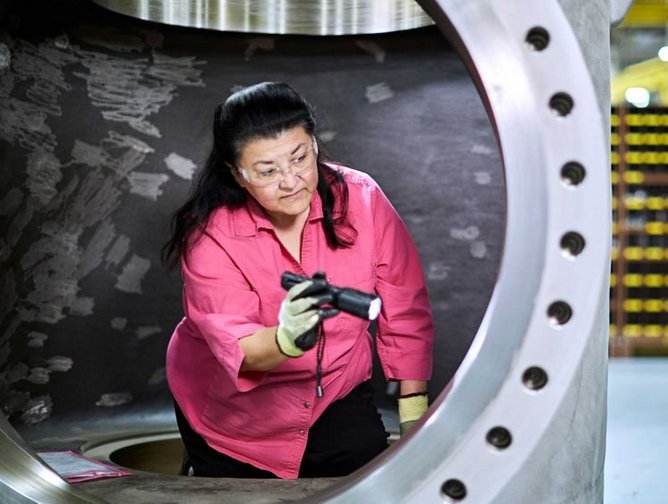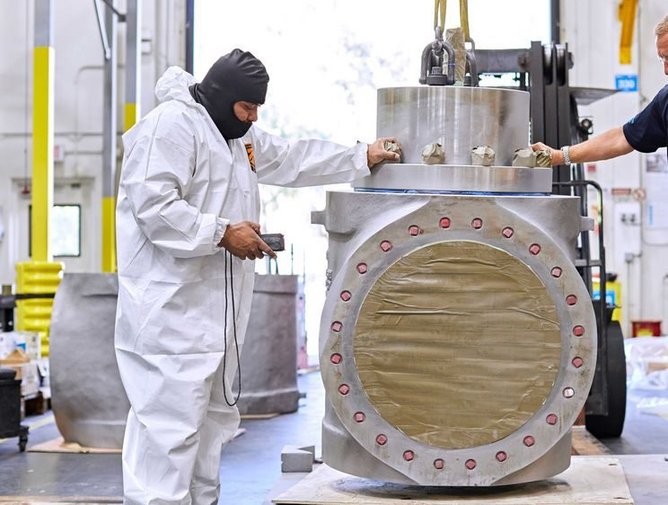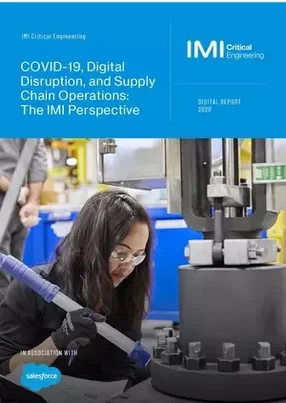COVID-19, Digital Disruption, and Supply Chain Operations: An IMI Perspective
IMI Critical Engineering is a leading provider of specialised valves for oil, gas, chemical and petrochemical industries, globally. ‘Flow control technologies’ for the sake of conciseness. The company has a myriad of subsidiaries around the world and employ over 4,000 professionals across different regions. Like any ‘big business’, in the looming shadow of the COVID-19 pandemic, IMI had to adapt to the new normal whilst still prioritising their clients’ needs and adapting their own staff setups to remain resilient in trying times.
At Supply Chain Digital, we wondered how a multinational company that provides crucial parts to industries across the globe dealt with the challenges presented by the pandemic; how technology influenced them, and what strategies they put in place to ensure their business success. Fortunately, Aidir Parizzi, Director of Global Supply Chain at IMI, took the time to chat with us about maintaining business operations in the face of adversity.
“While we kept as many people as possible working from home, the majority of our sites kept operating and serving our customers, following guidelines set by different governments around the globe. The first concern was regarding personal protection equipment (PPE). We have mobilised Supply Chain teams in Asia, the Americas and Europe to provide our employees with the necessary protection equipment. Around 100 thousand masks were acquired – not medical masks, but here we’re referring to FFP2 and FFP3, which provide enhanced protection. In addition, we procured thermometers, gloves, thousands of litres of hand sanitiser and thermal imaging devices for each site. We also had to deal with increasing import/export obstacles that came gradually ─ country restrictions, logistic issues, and licences required, for example.
From a business continuity aspect, what gave us the time and resources to focus on PPE, logistics and resourcing needs was the fact that we were well-prepared for an event of this magnitude”.
For IMI Engineering, though COVID-19, specifically, wasn’t necessarily expected, “pandemics, like other environmental, geopolitical or commercial disruption, of regional or global magnitude, are almost always inevitable, but at the same time highly predictable. Our Strategic Sourcing Process created three years ago, includes risk management measures that, in spite of a significant supplier base reduction in the last three years, provided us with the diversified dual sources we needed, the strong long-term supplier relationship, agreements and reliable data analysis required to react quickly and efficiently to unexpected events.”
All of these measures are, of course, dependent on digitalisation: a concept that has been sweeping across every industry for decades, now ─ but in a more driven manner, recently, with the adoption of new, futuristic technologies and capabilities. “The fundamental reason to digitise is speed. It’s no longer only about making the right decisions, but about making them in the shortest possible time. We need to understand the impact, real or potential, of commercial risks and opportunities, faster than our competition and before it cascades to our customers. An end-to-end Supply Chain planning also involves all functions and regions, working without colours and stripes, as a single company, and we’ve made significant progress in that regard”, Aidir stated.
When I asked Aidir about the widely-spread claim that digital transformation has undergone a ten-year evolution, courtesy of the pandemic, he suggested that it had sped up the process, but IMI were already evolving their supply chain norms long before the global event. “As a British company, in addition to the pandemic, we have been focused on potential disruption, delays and cost-related issues related to Brexit. Our Supply Chain Digital Twin, for example, was created to evaluate Brexit impact, and then expanded to other events. It helped us immensely to quickly react to the effects of the pandemic.”
“Beyond Supply Chain, the digital transformation effort had to be accelerated to cover all aspects of the operation, including relationships with customers and suppliers, remote customer assistance, inspections, and last but not least, how our products must adapt in a digital world. That journey is long and full of pivoting points, but our teams have the talent and motivation to get it done. I don’t think there’s a single formula that serves all companies, and the concept of digitalisation itself keeps evolving rapidly. Each company will have to find its own solution,” Aidir added.
A lot of companies, after the initial shock of COVID-19, having watched as their global supply chain networks were torn apart, their balance books inked with red figures, and job losses across the board, have openly stated that they wish they could have done things differently. Many would have done things differently on the run-up to the pandemic, had they known what was around the corner. On this, Aidir told me that IMI is “now looking at several measures to better prepare us for these events, but while we didn’t have a crystal ball, we put in place several actions in recent years that helped us in this period.”
“Having a truly global team with people in all continents creates an invaluable collaboration network, which was crucial for us this year. Two aspects we continue to improve are reinforcing or empowering our Category Management team and further investment in Cost Engineering tools,” the Global Director added.
As supply chain networks continue to expand, just like IMI’s, resiliency is becoming increasingly important. Yet, for such a popular term, it’s proving itself to be elusive, and difficult to actually grasp ─ this was a predictable problem when you consider that the majority of companies have rigid global, interdependent networks. In response to this idea, Aidir shared that “[IMI Critical Engineering] has ca. 850 direct material suppliers,” down from over 3000 just three years ago, “with virtually no sole sources. Resilience is an integral part of our supplier onboarding process, and we also focus on regional resilience, meaning that we aim to have dual sources within the regions and avoid financial losses in case of disruption. China and India as an example of dual sources.”
Aidir warns that, in the pursuit of supply chain resilience, many companies who are looking to adopt all of the latest technologies need to be wary. Regardless of whether you’re investing in Analytics, Automation, Cloud, Cybersecurity, IoT, or any other product, “[the] technology must stay focused on our top priority, which is to make us the supplier of choice to our customers. There’s always a risk of losing that focus when you prioritise internally only or work on technical aspects without customer input. It’s something we strive to keep in mind all the time.”
At the very end of the interview, I asked Aidir about the future outlook for IMI Critical Engineering and for the supply chain as a whole, his answer to which was both a poignant and succinct answer, “Digitalisation is a key aspect, but also flexibility, from a Supply Chain and operations point of view. We need to be able to manufacture and service our products wherever the customers are. The answer now is very similar to what it was last year, but the speed and motivation to act has been greatly increased.
We need to make sure the company continues to grow and innovate, in spite of current adversities. The best way to do it is to work in partnership with customers and suppliers. We’re confident we have the right people, technology and energy to continue delivering breakthrough technology for a better world.”



